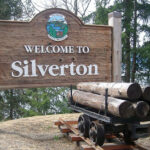Grohman Narrows Dredging — still too early to tell
Preliminary findings of a study to determine the feasibility of dredging Grohman Narrows were presented by BC Hydro to elected officials and the public on March 26 in Nelson.
“Does it make sense to proceed? It’s still to be determined,” said Sabrina Locicero, BC Hydro’s stakeholder engagement advisor.
Locicero was one of five presenters who shared the latest Grohman Narrows dredging study with the public.
“We are in the identification stage, presenting studies to date and sharing discussions.”
But Ron Mickel, RDCK Director for Area F found the information presented “very favourable.”
Mickel said from his perspective it seemed there were enough benefits for the project to proceed.
“From an environmental point of view, there will be some disruption, but nothing that won’t heal,” said Mickel. “The benefits are huge. This would take the peak flow out of June.”
After massive flooding and a record rainfall year in the spring of 2012, local governments asked BC Hydro to investigate dredging Grohman Narrows to reduce Kootenay Lake levels during spring run off.
The channel has been dredged three times since 1890 to increase flow.
Geotechnical studies showed that bedrock is relatively deep across most of the Grohman Narrows area and would not influence dredging operations and bed materials which consist of well graded mix of sand, rounded gravels and cobbles.
The only significant sediment comes from Grohman Creek the study said.
Excavation would not lead to any permanent reductions in Kootenay Lake levels nor would it lead to an increase in peak Kootenay Lake outflow during the freshet the study said.
Mickel’s understanding is that the sand/gravel bars in the channel would be removed. “From a recreational point of view, navigating through there now is fairly treacherous,” he said, favouring the removal.
The study estimated the project could cost anywhere from $28 million to $68 million depending on the volume, but according to Locicero, the highest volume alternative would bring the biggest energy benefit and lower the lake approximately two feet.
Mickel said that two feet would have made quite a difference to his constituents on the North Shore of Kootenay Lake in 2012.
There is an order in place from the International Joint Commission (IJC) on the upper levels allowed on Kootenay Lake (1,754,32 ft). But the dredging would put the lake level “at or below the IJC order a higher percentage of the time,” Locicero said.
According to Locicero, the channel would be deepened, not widened. “This study was all about what was under the water.”
BC Hydro also identified areas of environmental concern and features of significance. Ten archaeological sites, primarily along the north shore of the river were found, which consisted of
lithic artifacts, cultural depressions and pictographs.
“In-river dredging is rated as low potential for archaeological features,” the study said.
Rainbow trout are a key species and are known to spawn in the area, and a small rainbow trout, kokonee and bull trout fishery occur there.
Along with a large number of plant and wildlife species, the area is a key wildlife corridor for animals moving in and out of the Bonnington Range.
BC Hydro will conduct spring spawning surveys in 2014.
The next stage will include an analysis of the effects of flow and water level changes, permits and regulatory approvals needed and environmental management and mitigation plans.
With this first phase almost complete, the results indicate there would be only a small net energy benefit to BC Hydro, with considerable uncertainty about impacts and costs. The next phase could take up to two years and would be subject to regular re-evaluation of the project impacts, costs and benefits, the study said.
“My impression was that we are at the beginning stages of this research,” said Pegasis McGauley, alternate director for Area E, who also attended the meeting.
“Tentatively it looks like it might work,” said McGauley who “kayaked through peoples yards in Harrop in the spring of 2012.”
“But I think we have to be careful about the lows as the lake will be lower than in previous years.”


























Comments